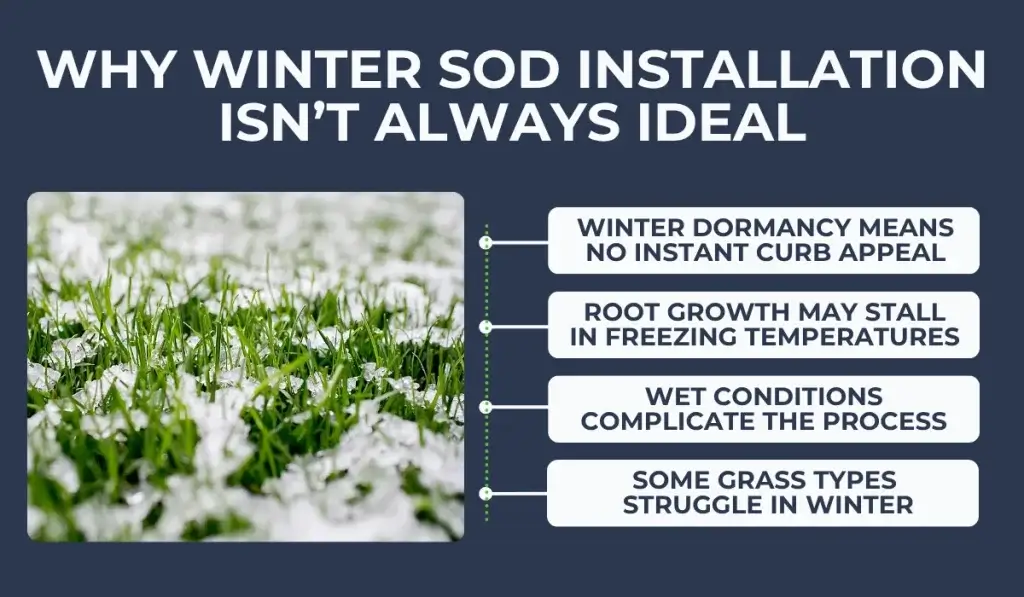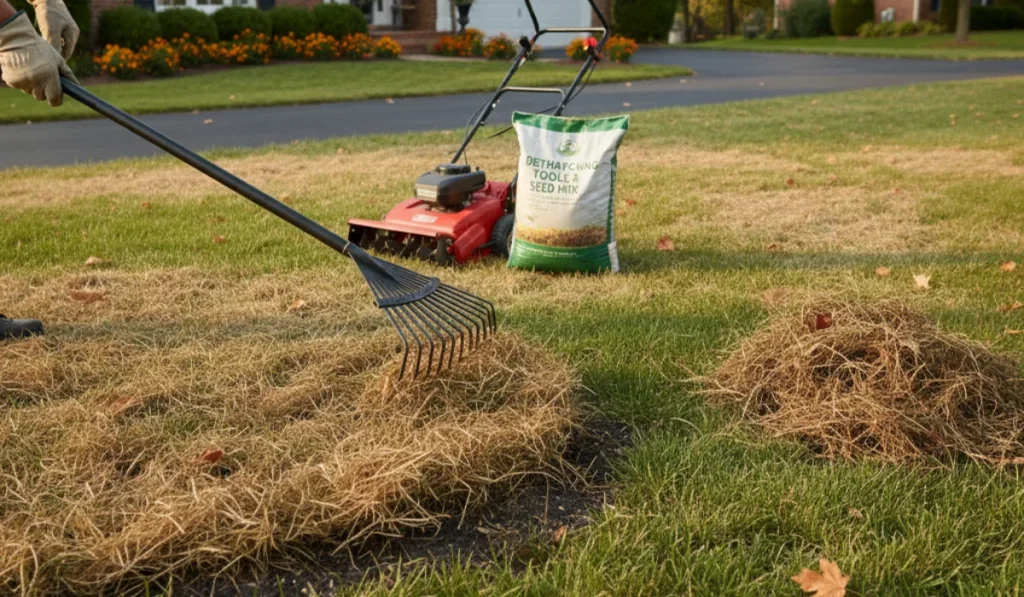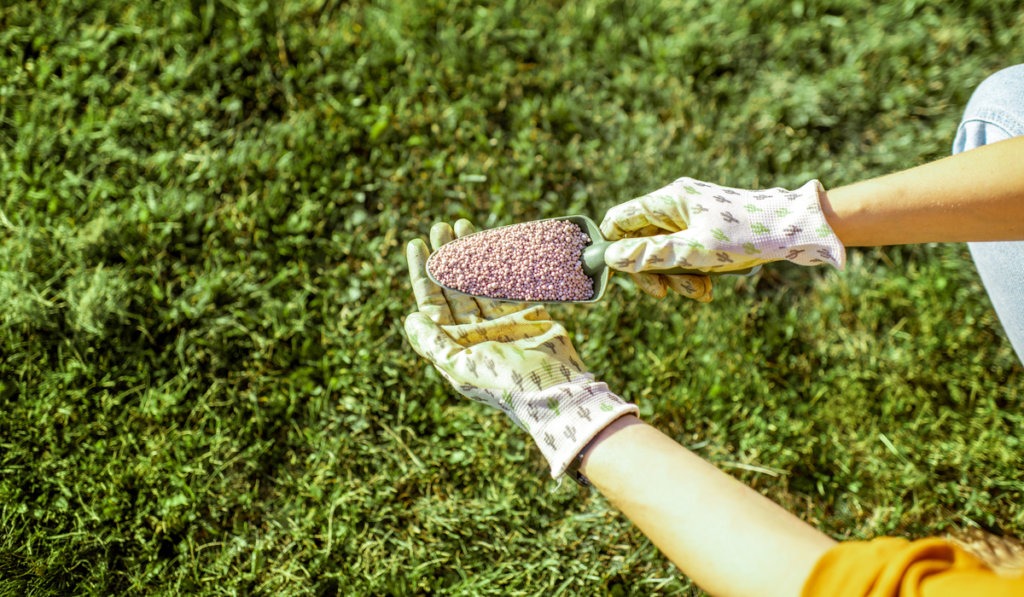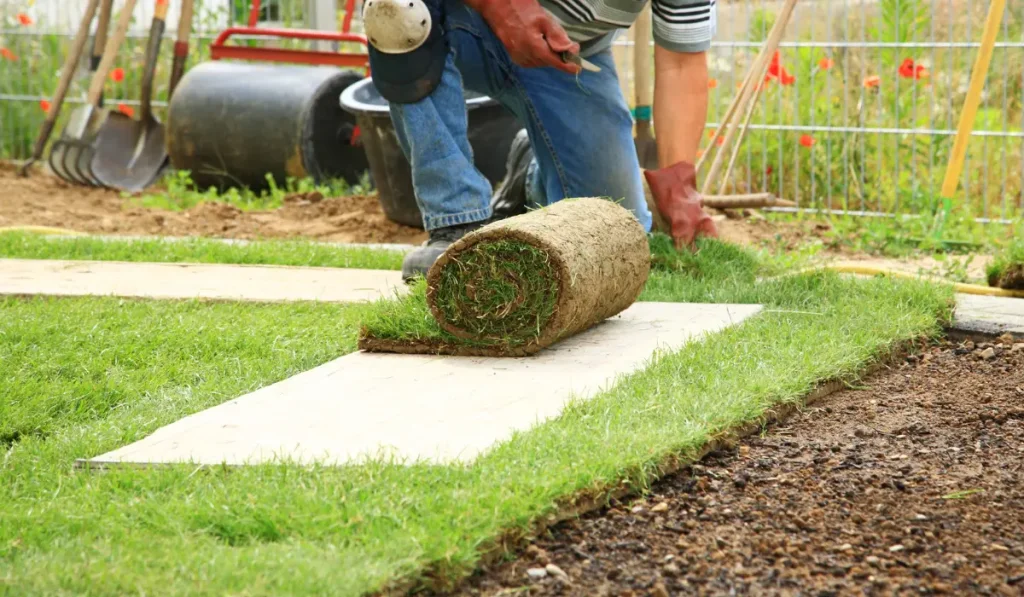You’ve probably been told spring or summer is the best time to install a lawn, but if your yard looks patchy during the winter months, it’s natural to wonder: can you lay sod in the winter?
For homeowners across California, whether you’re in the Central Valley, the Inland Empire, or somewhere coastal, the answer depends on a few important factors.
Let’s take a closer look at what winter sod installation involves and what kind of results you can expect.
Key Takeaways
- Winter sod installation is possible in California if soil isn’t frozen and you want roots established before spring.
- Cooler weather helps conserve water and reduces stress while sod farms stay open and offer better delivery and selection.
- Dormant sod stays brown and root growth may stall in cold regions where air pockets and shifting become problems.
- Proper prep includes using amendments and a sod roller while delaying mowing and herbicides until spring growth begins.
Does Laying Sod in Winter Work?
Yes, you can lay sod during wintertime, even in cold weather. And depending on your goals, winter might be the right time to do it. Here’s why:
Gives Roots a Head Start Before Summer
Winter installations allow sod roots to start establishing early, even when the top growth is dormant. This head start can mean better performance once the growing season begins.
Your laid sod will be ready to take off when spring temperatures rise, giving you a healthier, more robust green lawn by summer.
Less Water Is Required During Establishment
Because evaporation rates are lower, you’ll need less water to keep the sod moist. While your sprinkler system still plays a role, you won’t have to worry as much about daily watering schedules.
This is especially helpful in California, where lawn care must often account for drought and water restrictions.
Easier Access to Sod Farms and Delivery
Sod farms stay open year round, but their busiest season is spring.
That means if you’re installing sod in the winter, you’ll have more flexibility with delivery schedules, and you may even find better availability for premium types of sod like tall fescue.
Avoiding Summer Heat Stress
When you lay sod in July, you’re fighting against the elements. And that intense summer heat can put serious stress on your new sod.
Winter installation bypasses that issue, giving your lawn the chance to settle in under more forgiving conditions.
Why Winter Sod Installation Isn’t Always Ideal

Still, winter sod installation isn’t always straightforward. Here are a few challenges to think through before getting started:
Winter Dormancy Means No Instant Curb Appeal
Because bermuda grass and other warm-season grasses enter dormancy during the cooler months, sod made from these grasses naturally appears brown.
However, in California, these sods are often sold as overseeded varieties, typically with ryegrass, which stay green during the first winter. This not only improves curb appeal but also supports initial establishment since dormant sod won’t develop roots until warmer weather returns.
Root Growth May Stall in Freezing Temperatures
If you’re in a part of the state where freezing temperatures are common, sod roots may not develop much until the ground warms.
This delay can leave your lawn more vulnerable to air pockets or shifting, especially if it’s not installed properly using a sod roller.
Wet Conditions Complicate the Process
Frequent rain during the winter months can lead to muddy installation sites. That increases the risk of damaging the soil or trapping moisture under the sod.
It’s also harder to move a pallet of sod across soggy ground without tearing things up.
Some Grass Types Struggle in Winter
While cool-season grasses like tall fescue do well when installed in colder weather, warm-season grasses (such as St. Augustine, zoysia, and centipede) prefer warmer soil to get established.
Make sure the type of grass you’re installing is suited for your region and time of year.
Tips for Laying Sod in Winter
If you decide to go ahead with winter sod installation, it’s important to prep your soil the right way. Use proper amendments to improve soil structure, and consider applying a starter fertilizer to boost the development of the root system.
When it’s time to lay sod, stagger the seams tightly, press it down with a sod roller, and avoid walking on it for a few weeks.
Don’t jump into mowing until the grass shows signs of active growth. And hold off on using herbicides, even pre-emergents, until the lawn is more established.
Remember, this isn’t a quick DIY weekend project.
The success of your landscaping depends on patience and proper care.
Frequently Asked Questions
How soon should I water sod after a winter installation?
Water your sod the same day it’s installed, even in winter. Moisture is key to root survival and early development, especially in dry or windy conditions that can dry out the soil quickly.
Can pets use the lawn after winter sod installation?
Try to keep pets off the lawn for the first few weeks. Foot traffic can interfere with root bonding and shift the sod before it anchors into the soil during winter.
What tools do I need to install sod in winter?
You’ll need a sod cutter (if removing old grass), rake, sod roller, hose with sprinkler, and a utility knife for trimming. Winter mud may also require boards to walk on during placement.



